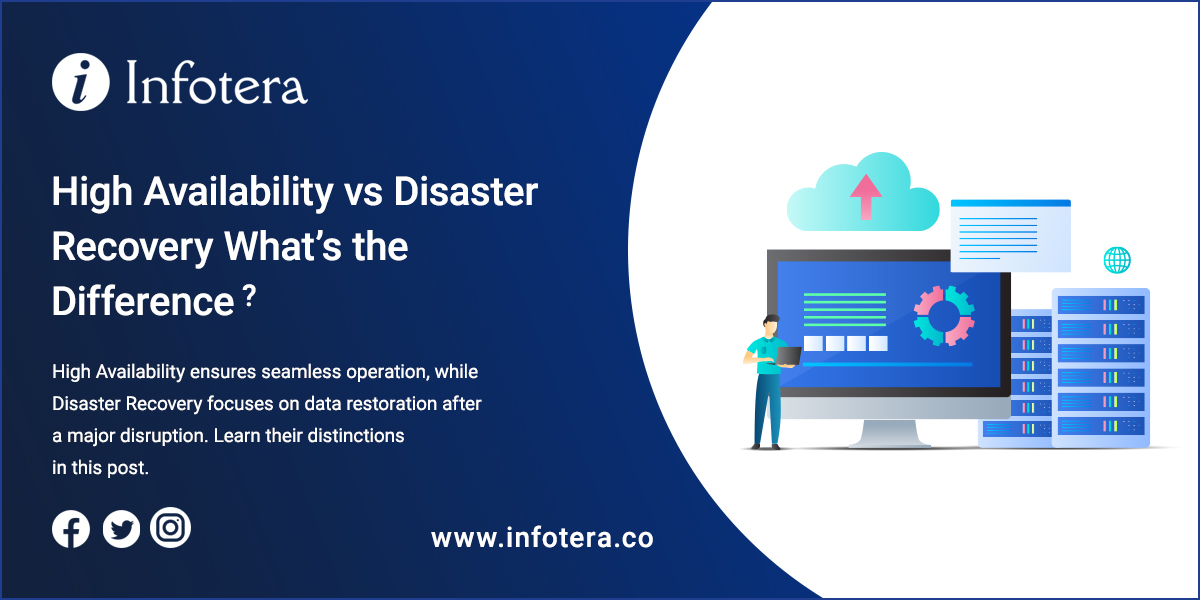One of the key solutions to protecting your business from IT disasters and security threats is Disaster Recovery as a Service (DRaaS). This service provides businesses with an offsite, cloud-based backup solution which can be used in the event of any disruption or failure.
The data stored on this service is regularly replicated to ensure it is updated and up to date. DRaaS ensures that if a critical failure occurs, your data is safe and can be accessed quickly and securely in order to get your business back up and running with minimal disruption.
There are also other IT disaster recovery solutions available such as Backup as a Service (BaaS). BaaS allows organizations to store their data on the cloud, providing them with an additional layer of protection in case of a disaster.
Whilst BaaS is useful for backing up data and ensuring it can be retrieved quickly, it does not offer the same level of protection as DRaaS as it only provides access to your stored data rather than enabling you to have business continuity in the face of a major disruption or failure.
What is High Availability and Disaster Recovery?
High Availability (HA) is a strategy which enables businesses to maintain continuous access to their critical systems and processes. The goal of an HA system is to provide uninterrupted operation with minimal downtime, meaning any disruption or failure will not have an impact on the performance of the IT infrastructure. This can be achieved using various techniques such as clustering, redundancy, load balancing and failovers.
On the other hand, Disaster Recovery (DR) is a strategy which focuses on mitigating the impact of any disaster or disruption that could cause an organization to lose access to its key systems, services and data.
The goal of DR is to ensure that critical IT infrastructure can be recovered quickly following a major disruption or failure, meaning businesses can remain operational with minimal downtime.
This is achieved by creating a backup system which includes data backups, offsite storage and replication of all systems to ensure they are up-to-date and able to be accessed quickly in an emergency.
High Availability
and Disaster Recovery go hand-in-hand, as the former focuses on preventing system failures through redundancy and load balancing, whilst the latter is about preparing for disasters by having backups and offsite storage in place.
By combining these two strategies, organizations can ensure their systems remain functional at all times and are able to recover quickly in any event of an emergency.
Infotera’s HA and DR solutions are designed to help businesses maintain uninterrupted access to their critical systems and data in the event of any disruption or failure. Our solutions provide businesses with the peace of mind that they can remain operational, even in the face of a major disaster.
1. Hardware redundancy
Redundant storage (RAID) and redundant power supplies (UPS) help ensure that data can be read from multiple disks, and the server continues to operate even if one of the components fails.
2. Software redundancy
Using clustering technology, applications can be easily spread across several servers so that a single component failure does not lead to downtime.
3. Network redundancy
Load balancing and failover technology ensures that systems remain accessible even in the event of a network failure.
4. Disaster recovery
Data backups, offsite storage and replication help ensure business continuity in the face of any disaster or disruption.
Disaster Recovery
As A Service (DRaaS) from Infotera provides businesses with a comprehensive suite of HA and DR solutions for their critical systems and data. Our solutions ensure that your business can remain operational in the event of any disruption or failure, and our team of experts is on-hand to provide timely support and advice when needed.
Recovery time objective: The recovery time objective (RTO) is the maximum amount of time that a system can be down before it is recovered to its operational and original state. This period varies between the system or application and its importance.
For low-level systems, this recovery time can be measured in a matter of hours or even days whereas for business-critical systems, this period can be measured in seconds or minutes. With the right strategies and solutions in place, RTOs can be kept to a minimum to keep businesses running smoothly and efficiently.
Recovery point objective: The recovery point objective (RPO) is the amount of data loss measured in time that can be tolerated in a disaster.
Using the above analogy of low-level systems, losing a day or two worth of data may be acceptable, while for business-critical systems such as transactional websites, that may be as short as minutes or even seconds.
By using the right strategies and solutions, organizations can ensure their RPOs are kept to a minimum.
So what is the difference?
While the objectives of both HA and DR are to keep systems online and functional, they do have different roles. High availability focuses on preventing system failures through redundancy and load balancing, while disaster recovery is all about preparing for disasters by having backups and offsite storage in place.
By combining these two strategies, organizations can ensure their systems remain functional at all times and are able to recover quickly in any event of an emergency.
At Infotera, our team of experts provide businesses with the peace of mind that their systems remain operational and available even when disaster strikes. Our HA and DR solutions ensure that your business can continue to operate without interruption, allowing you to focus on more important tasks.

